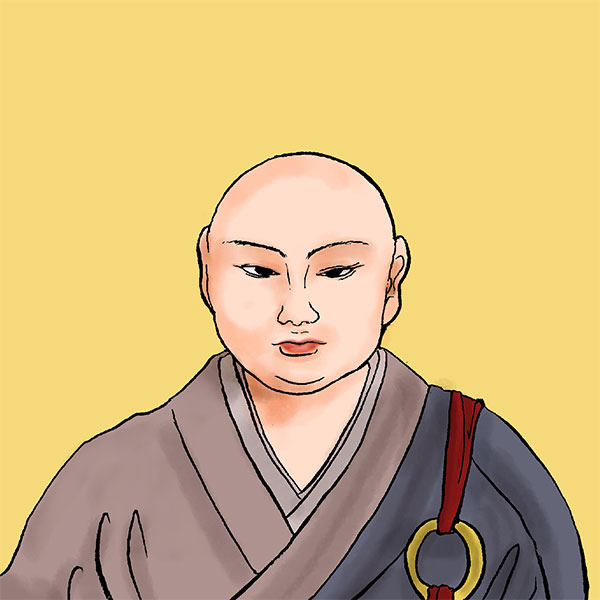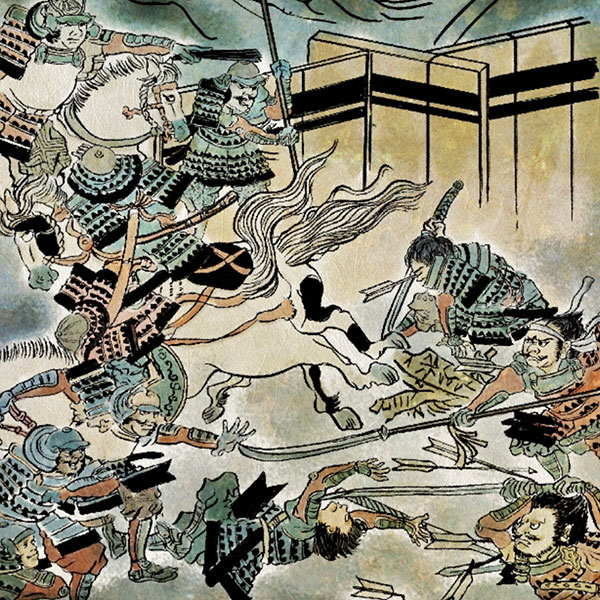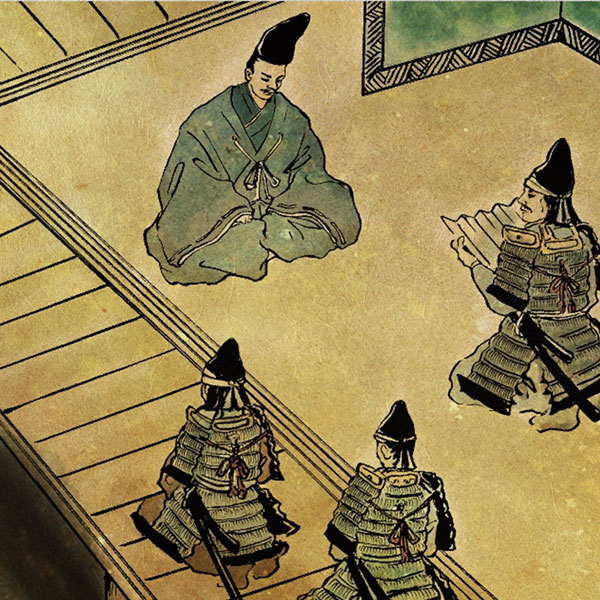Tomiko Hino (2/2)The Shogun's Kitchen and the Woman Who Became a Mother

Tomiko Hino
- Article category
- biography
- name
- Tomiko Hino (1440-1496)
- place of birth
- Kyoto
- Related castles

Nijo Castle
- related incident
Furthermore, he mediated negotiations between Masahiro Ouchi, a belligerent faction of the Western Army who had become a key figure from the latter half of the war, and the Shogunate, recognized Masahiro Ouchi's ownership as the guardian of the four countries, elevated him to official rank, and made peace. It was withdrawn from Kyoto.
Yoshinari Hatakeyama, a central figure in the rebellion who was in conflict with Masahiro, also left Kyoto as there was no point in fighting anymore due to this withdrawal. In return, Tomiko loaned Yoshinari 1,000 kanmon (some say it was a gift).
In a situation where it was impossible to back down due to the tension of wills, the mediation was done by carefully considering the interests of each party and carefully considering the compromises, and it can be said that Tomiko's proposal was welcomed by the parties who had lost sight of their exit strategy.
The shogunate's finances were in extreme turmoil due to the ensuing war, and in order to secure financial resources, they established checkpoints at important points called the ``Seven Exits of Kyoto'' and used them to finance them.
This measure was unpopular with people, but it is also possible that there was no other option. The town of Kyoto suffered severe damage during the Onin War, and the financial resources of the shogunate and even the imperial court were in dire straits.
Not only historic shrines and temples, but also the Emperor's palace was destroyed in a fire, and Emperor Gotsuchimikado was forced to live a difficult life as a freeloader for 10 years in Muromachi Dai, the residence of the Shogun family. Tomiko was in charge of managing such difficult finances.
In 1474, Yoshimasa retired and his son Yoshinao became the 9th Shogun. As Tomiko's guardian who supported him when he was only 9 years old, Tomiko became more deeply involved in politics.
Tomiko, who became a powerful person, received gifts such as ryozoku (copper coins) and swords. Tomiko amassed these assets as her personal property, and is said to have had assets worth up to 6 to 7 billion yen in modern currency.
At that time, it was common for the shogun's family to accept money and goods in return for listening to petitions from feudal lords and others. It is said that Tomiko prayed for peace in the world by making donations and gifts to the economically impoverished Imperial Court, restoring the Imperial Palace, building a new residence, and restoring shrines and temples that had been destroyed in the war. Masu.
After the Onin War and its end
As Yoshihisa grew up, he began to dislike Tomiko, and in 1483, he left Tomiko and moved to the Ise Sadamune residence, where he became addicted to alcohol.
As a result, Tomiko temporarily lost power, but in 1489, Yoshihisa died at the age of 25 while on an expedition to subjugate Takayori Rokkaku (Chokyo-Entoku War).
Although Tomiko was depressed by her son's sudden death, she negotiated with Yoshimasa to support Yoshitaka Ashikaga (later Yoshitane), who was born to Yoshimichi and her younger sister Ryoko, as shogun, and they reached an agreement in April of the same year.
When her husband Yoshimasa died in the New Year of Entoku 2 (1490), Yoshiki became the 10th shogun.
However, Yoshimi, who became her guardian, fought with Tomiko, who continued to hold power, and destroyed Tomiko's residence, the Ogawa residence, and seized her territory. After Yoshimi's death the following year, Yoshiki, who started direct government, also became hostile to Tomiko.
In 1493, while Yoshiki was on a campaign in Kawachi, Tomiko, along with Masamoto Hosokawa, staged a coup d'état and deposed Yoshiki, and appointed Yoshimasa's nephew Yoshizumi, the son of Horikoshi Kubo and Masatomo Ashikaga, to Became the 11th shogun (Meio Coup). Three years later, in 1496, Tomiko died at the age of 57.
Tomiko's grave
Tomiko's grave is said to exist at Kakai-in Temple in Kamigyo-ku, Kyoto City, and at Jisho-in Jonen-ji Temple in Akaiwa City, Okayama Prefecture.
One theory is that she immigrated to Okayama to rely on Norimune Urakami, and not only was Tomiko Hino's later years in Okayama lonely and lonely, but she also lived in a hermitage in Akaiwa, where she lived with her husband and son. There is a legend that he spent his time in peace while holding a memorial service.
Additionally, Daiji-in (Jodo sect), which was founded by Sukenmon-in, the mother of Emperor Go-Enyu, was located in Kyoto and was adjacent to Hokyo-ji until the early Meiji period. So I entered the Daiji-in temple.
Today, Daiji-in Temple has been inherited by Hokyo-ji Temple, and a statue of Tomiko Hino is also enshrined in Amida-do Hall.
Later Ashikaga Shogun family
After the Onin War, the decline of the shogunate became noticeable, and the relationship between the shogunate and the imperial court began to change. After the Meio Coup, the shogunate family was effectively divided, and it became impossible to expect financial support from the shogunate to the imperial court.The imperial court accepted applications for appointment as long as there was a formal application and visit (donation of necessary expenses) from either side. By performing a kind of mechanical process of recognition, they tried to avoid the internal conflicts of the shogun family from affecting the imperial court.
However, the division of the Ashikaga Shogun family into the Yoshitane line (Yoshitane Ashikaga, Yoshitsugu Ashikaga, and Yoshihide Ashikaga) and the Yoshizumi line (Yoshizumi Ashikaga, Yoshiharu Ashikaga, Yoshiteru Ashikaga, and Yoshiaki brothers) affected the Sekkan family, which was a powerful court noble. Masu.
This is because the Konoe family strengthened their ties by making their daughter the legal wife of Yoshiharu and Yoshiteru, and in response, the Kujo family formed an alliance with the Yoshitane family.
As a result, a political conflict was created between the Yoshitane Shogun family and the Kujo-ryu Sekkan family (Kujo family, Nijo family, and Ichijo family) versus the Yoshizumi-based Shogun family and the Konoe-ryu Sekkan family (Konoe family and Takatsukasa family). .
For this reason, when the Yoshizumi-line shogun family had power, the Kujo school was forced to dismiss the regent and move back to the countryside, and conversely, when the Yoshizumi-line shogun family was driven out of Kyoto, the Konoe school lost its power. The situation became extremely complicated and confusing as the Konoe family accompanied the Yoshizumi line to the countryside (the Takatsukasa family became extinct for a time in the middle of the Sengoku period).
Later, when the Eiroku Incident occurred, Sakihisa Konoe, despite the fact that Yoshiteru, a descendant of the Konoe family, was killed, turned to support Yoshihide Ashikaga, who had been in conflict with him, and Haruyoshi Nijo, in order to counter that, supported Yoshiteru. Switch to the support of Yoshiaki, the younger brother of Yoshiaki.
As a result, when Yoshiaki went to Kyoto with the backing of Oda Nobunaga, Sakihisa Konoe lost his position as Kanpaku and was forced to defect.Haruyoshi Nijo was appointed as Kanpaku in his place, and Kujo Tanemichi, who had defected, moved to Kyoto. I returned to
Afterwards, Yoshiaki was expelled by Nobunaga and the Muromachi shogunate was effectively destroyed, and the Ashikaga shogunate lost its real existence, but the conflict between the regents led to a dispute between the Kanpaku and the Shogunate.
Reread Tomiko Hino's article
- related incident

- WriterTomoyo Hazuki(Writer)I have loved history and geography since my student days, and have enjoyed visiting historical sites, temples and shrines, and researching ancient documents. He is especially strong in medieval Japanese history and European history in world history, and has read a wide range of things, including primary sources and historical entertainment novels. There are so many favorite military commanders and castles that I can't name them, but I especially like Hisashi Matsunaga and Mitsuhide Akechi, and when it comes to castles, I like Hikone Castle and Fushimi Castle. Once you start talking about the lives of warlords and the history of castles, there's a side of you that can't stop talking about them.





